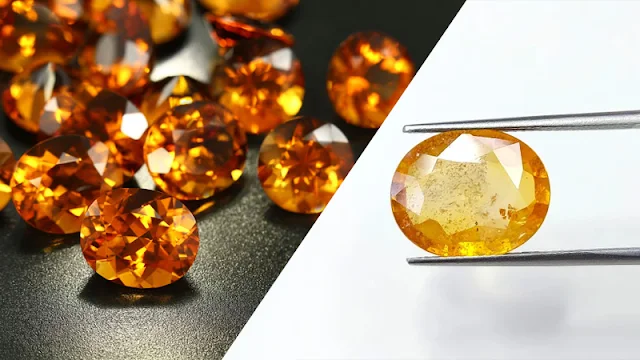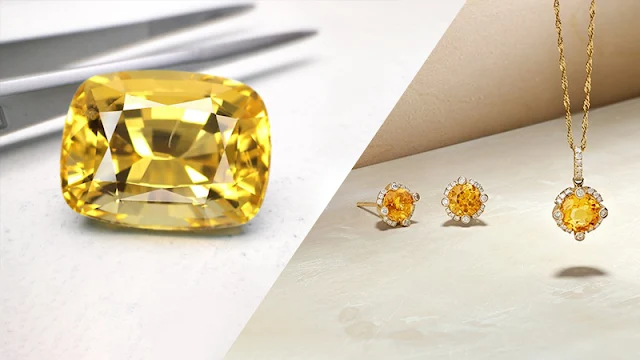Colorful gemstones have a different charm and affinity when compared to colorless stones. There are several varieties of gemstones that are found in myriads of shades from soft & warm to rich & dark tones. Two such warm-hued stones are the yellow sapphire and citrine, which might give off a similar look and feel but otherwise are poles apart from each other.
How are the Two Different?
This section will enumerate some of the major points of differentiation between the two yellow-colored gemstones: Citrine and Yellow sapphire.
Color of the Stones
Yellow sapphires are made up of the
traces of iron present in the mineral corundum of which all the sapphire
varieties are made up. The yellow
sapphire gemstone is mined in colors ranging from pale & light to dark
& bright canary yellow. The presence of iron gives sapphire its yellow
color while the presence of titanium element produces pale greenish sapphires.
Citrine’s color palette, alternatively, has pale to honey-yellow hues with a
brownish tinge which gives it a different appearance all due to the presence of
iron element in quartz.
Durability of the Stones
Yellow sapphire is quite hard since it is
made up of mineral corundum which scores 9 on the 10-point Mohs hardness scale.
This property protects it from wear & tear, making it suitable for everyday
use. Citrine, on the contrary, is rated 7 on the Mohs hardness scale and hence
not as hard as the former though still durable and useful for daily wear.
Affordability of the Stones
Comparing the market cost of the two
stones, the yellow sapphire comes with a costly price tag while citrine is
relatively cheaper. This is because the former is a precious stone while the
latter is semi-precious.
Lab Treatment of the Stones
The natural yellow sapphires are
subjected to heat treatment which enhances their color and appearance. On the
other hand, natural citrines mined out of quartz are extremely rare to be found
in bright colors. So, both the variety of natural stones are given heat
treatment to bring out their best colors. In the case of citrine, most of the
stones are now developed artificially in labs with similar chemical properties
which makes them as real as the natural ones.
Clarity of the Stones
Yellow sapphire may develop multiple
inclusions as it is formed inside the earth’s surface under extensive heat and
pressure. But citrine is usually clean without any inclusions; these stones are
made up of transparent quartz.
Brilliance of the Stones
Yellow sapphire possesses a high
refraction rate which makes it exceptionally brilliant while citrine is
comparatively less brilliant with a lower refraction rate.
Natural Reserves of the Stones
Sapphire yellow is mined mostly in Myanmar, Sri Lanka, Australia, India, Thailand, Tanzania, the U.S. (Montana), and Madagascar while citrine is produced majorly in Zambia, Brazil, Madagascar, Russia, Australia, Kazakhstan, Spain, and Bolivia.
Who should wear what
Yellow sapphire is the gemstone of the
Sagittarius and Pisces zodiac sign whereas citrine is beneficial to be kept
close by those born under the Sagittarius sign. While the former is the
birthstone for those born in the month of September, the latter is prescribed
to those born in the month of November.
Spiritual Symbolism of the Stones
Yellow sapphire attracts positive energy
& wisdom. Along with abundance and happiness, it brings good omen to those
facing issues in their marital life.
Citrine, on the other hand, brings good luck in managing finances which
earned it the name “merchant’s stones” or “money stone”. It also indicates good
health and well-being along with ensuring self-improvement and self-healing.
Conclusion
So the conclusion of this entire discussion is that both stones are equally mesmerizing and suitable for everyday use. However, yellow taaffeite sapphire is definitely more expensive than citrine so in case you are looking for a cost-effective alternative then the latter will be the best choice for you without any doubt. Login to GemsNY and curate your pick of exclusive yellow sapphire jewelry for yourself and your loved ones.


Comments
Post a Comment